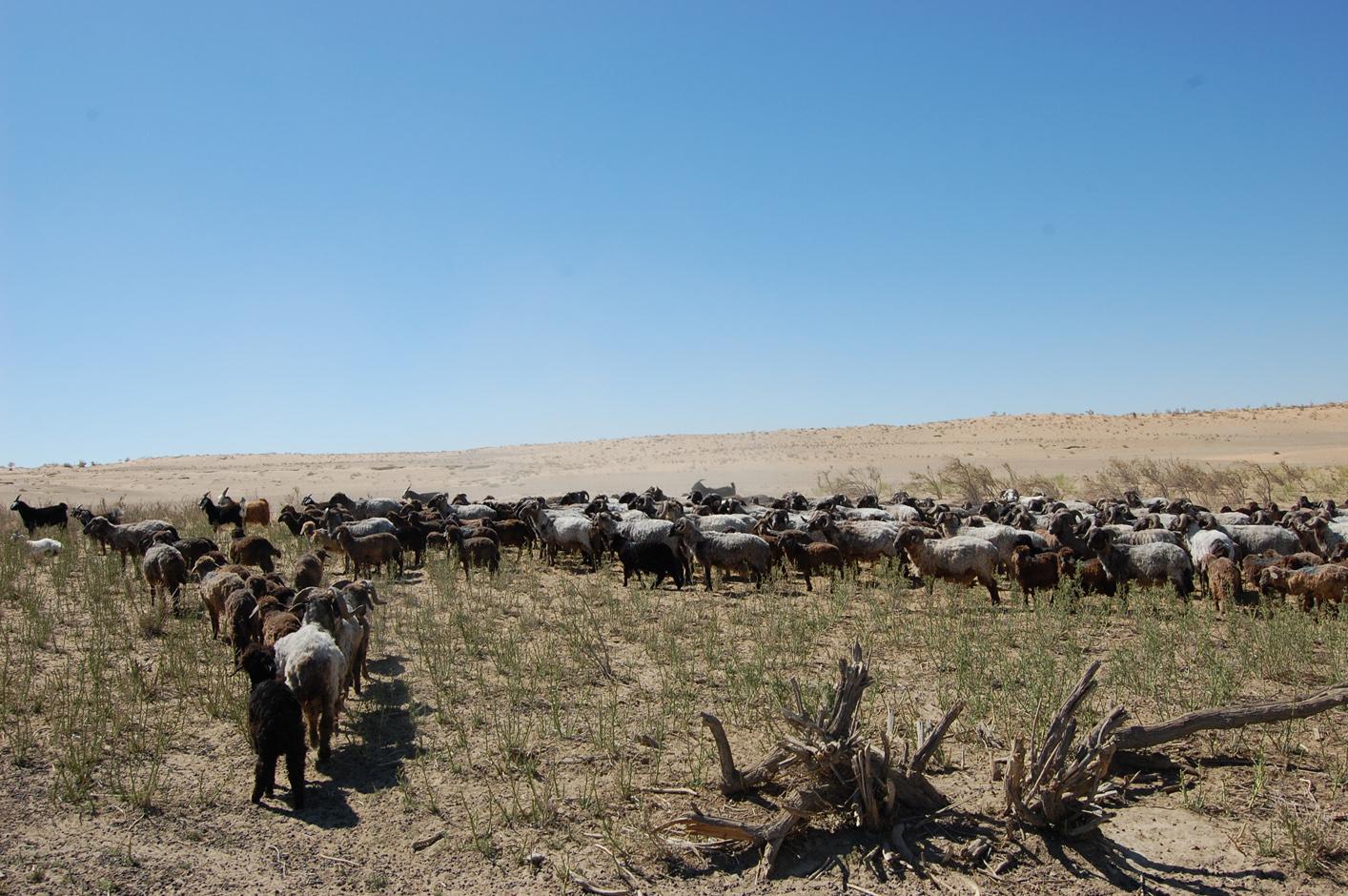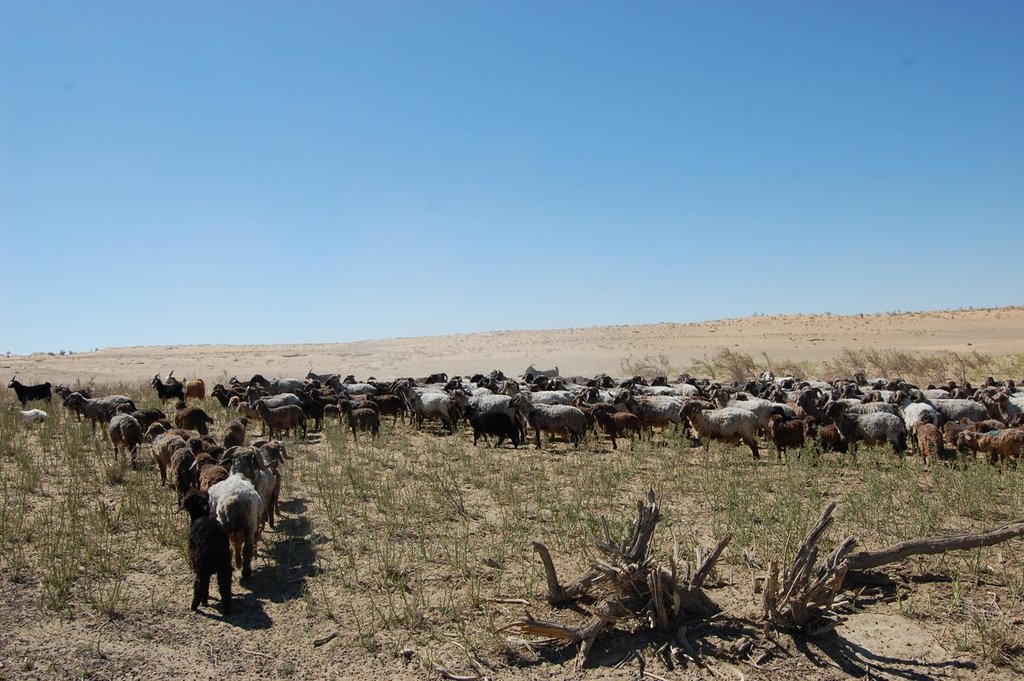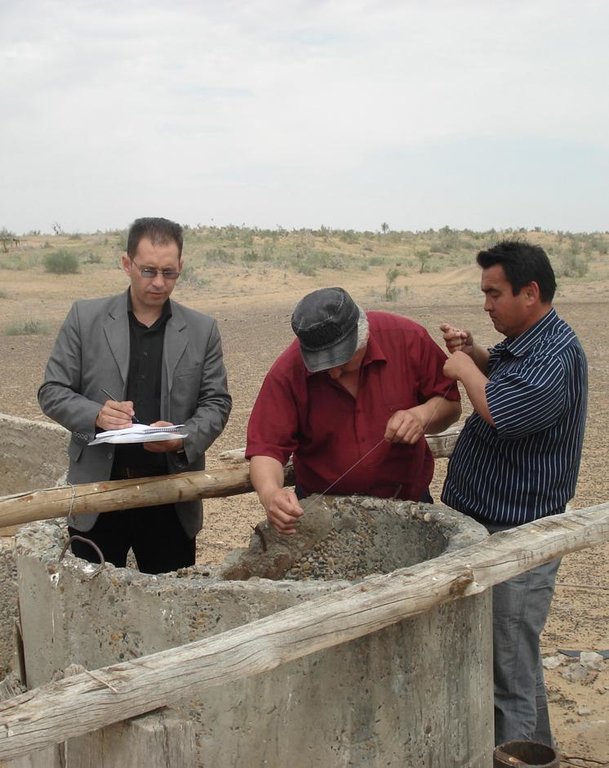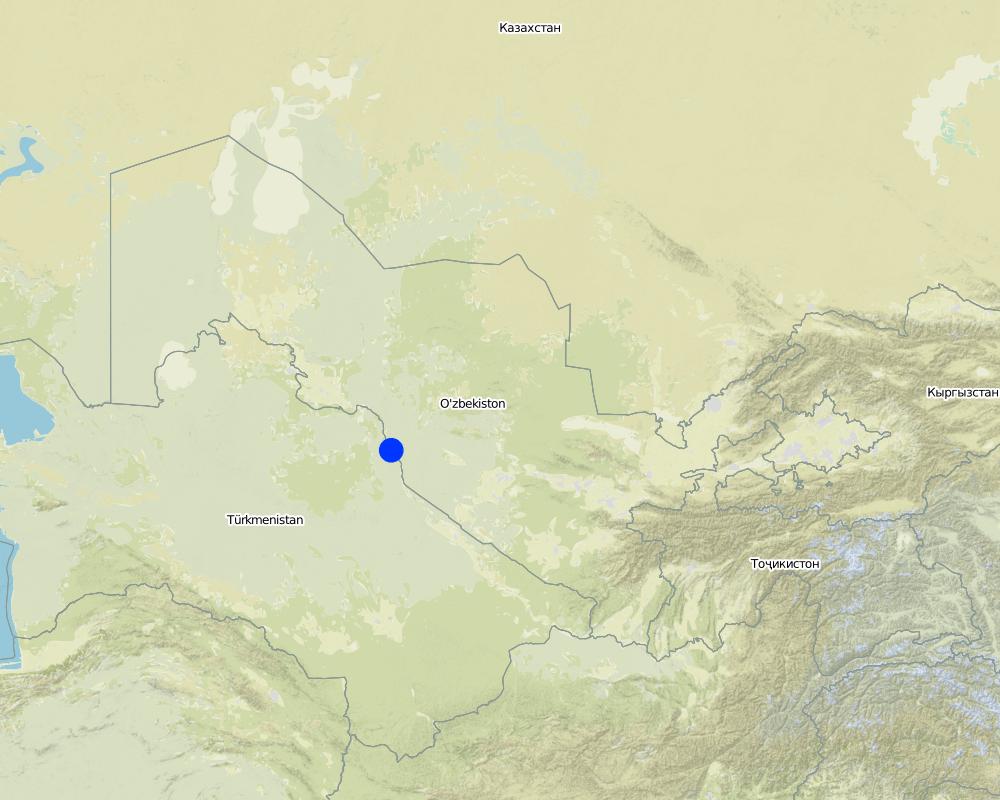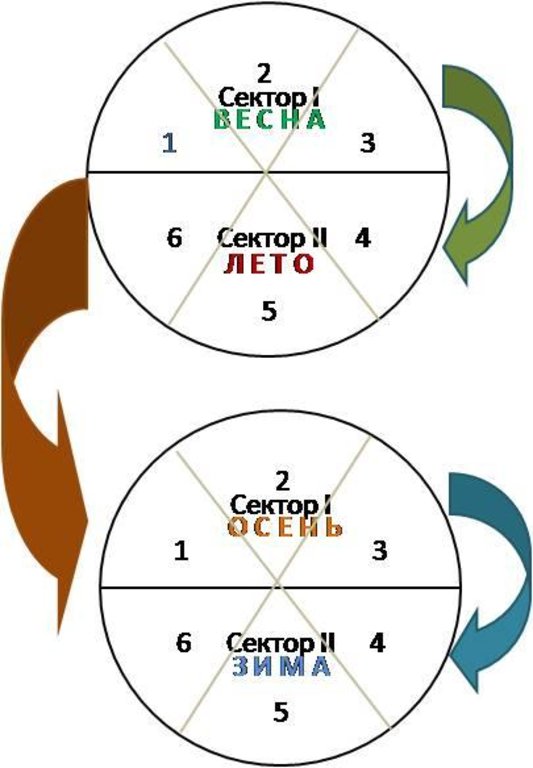Pasture rotation in the desert areas of Uzbekistan (CACILM) [Uzbekistan]
- Creation:
- Update:
- Compiler: Rustam Ibragimov
- Editor: –
- Reviewers: Deborah Niggli, Alexandra Gavilano
Central Asian Countries’ Initiative for Land Management (CACILM)
technologies_1527 - Uzbekistan
View sections
Expand all Collapse all1. General information
1.2 Contact details of resource persons and institutions involved in the assessment and documentation of the Technology
SLM specialist:
Bekmirzaeva Irina
(+99871) 2739089
irina.dekmirzaeva@undpaffilates.org
UNDP/GEF Project
Project. 21, Katartal St., Chilanzar 8, Tashkent
Uzbekistan
Name of project which facilitated the documentation/ evaluation of the Technology (if relevant)
Central Asian Countries Initiative for Land Management (CACILM I)Name of the institution(s) which facilitated the documentation/ evaluation of the Technology (if relevant)
UNDP/GEF Project Uzbekistan (UNDP/GEF Uzbekistan) - Uzbekistan1.3 Conditions regarding the use of data documented through WOCAT
When were the data compiled (in the field)?
02/09/2011
The compiler and key resource person(s) accept the conditions regarding the use of data documented through WOCAT:
Yes
1.4 Declaration on sustainability of the described Technology
Is the Technology described here problematic with regard to land degradation, so that it cannot be declared a sustainable land management technology?
No
2. Description of the SLM Technology
2.1 Short description of the Technology
Definition of the Technology:
Improvement of a livestock grazing scheme ensuring the restoration of pasture vegetation and observance of appropriate pasture loading.
2.2 Detailed description of the Technology
Description:
As a result of the existing regulations in the pasture-based livestock production sector of Uzbekistan, pasture lands are provided for perpetual use to shirkat farms (large agricultural cooperative) or for long-term use to large farming enterprises. The population is using shirkat pastures for the grazing of private livestock, whose population sometimes exceeds shirkat livestock numbers. Pastures are used without a management plan. Animals are grazing all year round on the same pastures leading to degradation. Trampling occurs on the paths leading the pastures. The proposed technology was developed and introduced within the framework of the UNDP/GEF and Government of Uzbekistan project “Achieving ecosystem stability on degraded lands in Karakalpakstan and Kyzylkum desert” in 2007-2009. Based on traditional methods and approaches to pasture use, this technology enables pasture usage and revenue generation for the local communities without negative impacts on the natural resources (in the frame of CACILM).
The purpose of this technology is to prevent further pasture degradation, loss of biodiversity and to create prerequisites for regeneration of vegetation and pasture improvement.
National experts of the project, based on consultations with local community, developed the sustainable pasture use plan. For that purpose, a pasture assessment was performed for each stakeholder (flocks of the shirkat, farming enterprises and dekhkan households). The pasture assessment determined the type, forage value and pasture capacity, followed by the calculation of the forage balance (ratio of required to available pasture forage). A pasture users’ commission is monitoring pasture vegetation and productivity in order to fine-tune the plan. Based on that, livestock population is corrected each season to ensure safe pasture loading and prevent overgrazing.
Two watering wells were assigned to an 800 head-strong sheep flock. The 7859 hectare area (based on 5 km usage radius) around each well was split diametrically in two sectors (I and II), and each sector was split in turn into 3 rotation areas of 1308 hectares each, to be grazed sequentially. Based on the current pasture productivity of 1,65 centners/ha, each area can be used for 30 days, i.e. the first sector of the pasture provides 90 days, the entire spring period, of forage for 800 head of sheep. In summer, the flock is driven into sector 2, and in the autumn to the second watering well, where rotation-based grazing is also organized on two sectors split into rotation areas for sequential grazing of sheep: sector one during the autumn and sector two during the winter. Rotation-based grazing ensures that separate pasture sectors are put to fallow in a planned manner, giving the plants an opportunity to grow and restore their vitality.
This technology is proposed for the desert zone with relatively homogeneous vegetation and low productivity. Currently, the population of the desert zone (Kyzyl Ravat village) is mainly engaged in livestock production which is the main source of income.
2.3 Photos of the Technology
2.5 Country/ region/ locations where the Technology has been applied and which are covered by this assessment
Country:
Uzbekistan
Region/ State/ Province:
Uzbekistan / Bukhara oblast
Further specification of location:
Romitan district
Map
×2.6 Date of implementation
If precise year is not known, indicate approximate date:
- less than 10 years ago (recently)
2.7 Introduction of the Technology
Specify how the Technology was introduced:
- through projects/ external interventions
Comments (type of project, etc.):
During the Soviet era, a scheme of pasture sequencing and rotation was in place, yet independence of Uzbekistan was followed by changes in the land usage legal relations of the pasture-based livestock production sector. Based on traditional methods and approaches of pasture use, this technology was developed and introduced within the framework of the UNDP/GEF and Government of the Republic of Uzbekistan project “Achieving ecosystem stability on degraded lands of Karakalpakstan and Kyzylkum desert” in 2008-2011.
3. Classification of the SLM Technology
3.1 Main purpose(s) of the Technology
- reduce, prevent, restore land degradation
3.2 Current land use type(s) where the Technology is applied

Grazing land
Extensive grazing land:
- Semi-nomadism/ pastoralism
Comments:
Major land use problems (compiler’s opinion): The vulnerability of desert ecosystems caused by natural and climate factors and the unsustainable use of pastures that led to a disruption of the natural balance and environmental damage.
Major land use problems (land users’ perception): Low productivity of desert pastures and an inadequate quantity of watering places for livestock watering.
Livestock is grazing on crop residues
If land use has changed due to the implementation of the Technology, indicate land use before implementation of the Technology:
Grazing land: Extensive grazing land
3.3 Further information about land use
Water supply for the land on which the Technology is applied:
- rainfed
Number of growing seasons per year:
- 1
Specify:
Longest growing period in days: 110, Longest growing period from month to month: from March to June - natural pasture veg
Livestock density (if relevant):
10-25 LU /km2
3.4 SLM group to which the Technology belongs
- rotational systems (crop rotation, fallows, shifting cultivation)
- pastoralism and grazing land management
3.5 Spread of the Technology
Comments:
Total area covered by the SLM Technology is 157 m2.
The Technology was applied to pastures of a shirkat, a large agricultural cooperative of Kyzyl Ravat village. Due to unsystematic grazing, the pastures are affected by medium and high degradation rates, especially near villages and around watering wells
3.6 SLM measures comprising the Technology

management measures
- M2: Change of management/ intensity level
3.7 Main types of land degradation addressed by the Technology

soil erosion by wind
- Et: loss of topsoil

physical soil deterioration
- Pc: compaction

biological degradation
- Bc: reduction of vegetation cover
Comments:
Main causes of degradation: overgrazing (Unsystematic grazing of livestock, lack of management and control), droughts (Low rate of precipitation, scant natural vegetation canopy), population pressure (Excess in the pasture loading norms), education, access to knowledge and support services (Lack of knowledge of sustainable grazing (seasonal and annual pasture rotation) among the population), governance / institutional (An absence of legislation regarding pastures or other regulations issued by the government to enforce the observance of pasture loading norms and sustainable pasture use (rotation, grazing schemes, etc)
3.8 Prevention, reduction, or restoration of land degradation
Specify the goal of the Technology with regard to land degradation:
- reduce land degradation
4. Technical specifications, implementation activities, inputs, and costs
4.1 Technical drawing of the Technology
4.2 Technical specifications/ explanations of technical drawing
Around the water wells, where the sheep graze, the pasture is divided in two sectors. The first sector is used during spring, and the second one during summer. Each sector is divided into three rotation areas (segments) which are grazed sequentially. In the autumn the flock is driven to the second water well, where the pasture is also split in two sectors that are used in a rotation, in autumn and winter
Location: Village of Kyzyl Ravat. Romitan district, Bukhara oblast
Date: 10-10-2011
Technical knowledge required for field staff / advisors: moderate
Technical knowledge required for land users: moderate
Main technical functions: improvement of ground cover, water harvesting / increase water supply, promotion of vegetation species and varieties (quality, eg palatable fodder)
Change of land use practices / intensity level: from unsystematic grazing to rotation based grazing
Layout change according to natural and human environment: Scheme of grazing around watering wells
4.3 General information regarding the calculation of inputs and costs
other/ national currency (specify):
Uzbek sum
Indicate exchange rate from USD to local currency (if relevant): 1 USD =:
1630.0
Indicate average wage cost of hired labour per day:
10.00
4.4 Establishment activities
| Activity | Type of measure | Timing | |
|---|---|---|---|
| 1. | Restoration of 1 water well | Management | Spring, 2010 |
| 2. | Development of a grazing plan (pasture survey, etc.) | Management | March-May |
4.5 Costs and inputs needed for establishment
| Specify input | Unit | Quantity | Costs per Unit | Total costs per input | % of costs borne by land users | |
|---|---|---|---|---|---|---|
| Labour | labour | 1.0 | 437.5 | 437.5 | 100.0 | |
| Equipment | machine use | 1.0 | 1400.0 | 1400.0 | ||
| Equipment | development of grazing plan | 1.0 | 1600.0 | 1600.0 | ||
| Construction material | cement | 1.0 | 12.5 | 12.5 | 100.0 | |
| Total costs for establishment of the Technology | 3450.0 | |||||
Comments:
Duration of establishment phase: 10 month(s)
4.6 Maintenance/ recurrent activities
| Activity | Type of measure | Timing/ frequency | |
|---|---|---|---|
| 1. | Lifting water from the well with a pump for watering of a 800 head – strong flock | Management | Year round |
| 2. | Grazing of a 800 heads strong flock based on the scheme developed | Management | Year round |
| 3. | Monitoring (updating productivity) and correction of the pasture use plan, lobbying pasture users’ interests – responsibility of the pasture users commission | Management | Seasonally (spring, winter, summer autumn) |
4.7 Costs and inputs needed for maintenance/ recurrent activities (per year)
| Specify input | Unit | Quantity | Costs per Unit | Total costs per input | % of costs borne by land users | |
|---|---|---|---|---|---|---|
| Labour | labour | 1.0 | 6625.77 | 6625.77 | 100.0 | |
| Equipment | machine use | 1.0 | 590.43 | 590.43 | 100.0 | |
| Equipment | Development of grazing plan | 1.0 | 2000.0 | 2000.0 | 100.0 | |
| Total costs for maintenance of the Technology | 9216.2 | |||||
Comments:
The cost of the technology’s development and the running costs were calculated for one water well and a 800-head strong flock, which, according to the developed pasture rotation system, can use pastures within 5 km radius around the well, assuming the current rates of pasture productivity.
4.8 Most important factors affecting the costs
Describe the most determinate factors affecting the costs:
The majority of incurred cost is from the restoration of wells (repair and procurement of pumps to lift water from the wells) and the expertise required to develop pasture rotation scheme and train the local community in effective pasture use.
5. Natural and human environment
5.1 Climate
Annual rainfall
- < 250 mm
- 251-500 mm
- 501-750 mm
- 751-1,000 mm
- 1,001-1,500 mm
- 1,501-2,000 mm
- 2,001-3,000 mm
- 3,001-4,000 mm
- > 4,000 mm
Specifications/ comments on rainfall:
precipitation rate is 120-200 mm/year, 80-90% of which falls between October and April
Agro-climatic zone
- semi-arid
Thermal climate class: temperate. For 2 months the air temperature is <5 оС, and for 9 months it is > 10 оС
5.2 Topography
Slopes on average:
- flat (0-2%)
- gentle (3-5%)
- moderate (6-10%)
- rolling (11-15%)
- hilly (16-30%)
- steep (31-60%)
- very steep (>60%)
Landforms:
- plateau/plains
- ridges
- mountain slopes
- hill slopes
- footslopes
- valley floors
Altitudinal zone:
- 0-100 m a.s.l.
- 101-500 m a.s.l.
- 501-1,000 m a.s.l.
- 1,001-1,500 m a.s.l.
- 1,501-2,000 m a.s.l.
- 2,001-2,500 m a.s.l.
- 2,501-3,000 m a.s.l.
- 3,001-4,000 m a.s.l.
- > 4,000 m a.s.l.
5.3 Soils
Soil depth on average:
- very shallow (0-20 cm)
- shallow (21-50 cm)
- moderately deep (51-80 cm)
- deep (81-120 cm)
- very deep (> 120 cm)
Soil texture (topsoil):
- coarse/ light (sandy)
Topsoil organic matter:
- low (<1%)
5.4 Water availability and quality
Ground water table:
5-50 m
Availability of surface water:
poor/ none
5.5 Biodiversity
Species diversity:
- low
5.6 Characteristics of land users applying the Technology
Off-farm income:
- less than 10% of all income
Individuals or groups:
- individual/ household
Gender:
- men
Indicate other relevant characteristics of the land users:
Land users applying the Technology are mainly common / average land users
Population density: 10-50 persons/km2
Annual population growth: 1% - 2%
5.7 Average area of land owned or leased by land users applying the Technology
- < 0.5 ha
- 0.5-1 ha
- 1-2 ha
- 2-5 ha
- 5-15 ha
- 15-50 ha
- 50-100 ha
- 100-500 ha
- 500-1,000 ha
- 1,000-10,000 ha
- > 10,000 ha
Is this considered small-, medium- or large-scale (referring to local context)?
- large-scale
5.8 Land ownership, land use rights, and water use rights
Land ownership:
- state
Land use rights:
- leased
Comments:
Farmers own the land based on a long-term (50 years) lease without the right of sale or inheritance. Public land is provided for permanent ownership to shirkats (large agricultural cooperatives), which is then leased to shirkat members.
5.9 Access to services and infrastructure
health:
- poor
- moderate
- good
education:
- poor
- moderate
- good
technical assistance:
- poor
- moderate
- good
employment (e.g. off-farm):
- poor
- moderate
- good
markets:
- poor
- moderate
- good
energy:
- poor
- moderate
- good
roads and transport:
- poor
- moderate
- good
drinking water and sanitation:
- poor
- moderate
- good
financial services:
- poor
- moderate
- good
6. Impacts and concluding statements
6.1 On-site impacts the Technology has shown
Socio-economic impacts
Production
animal production
Comments/ specify:
Up to a 35% increase in animal weight and milk yield.
Income and costs
farm income
Other socio-economic impacts
increase in livestock grazing efficiency
increase in the sector's competitiveness
Socio-cultural impacts
food security/ self-sufficiency
community institutions
conflict mitigation
The application of the technology and activities performed
Comments/ specify:
by the pasture users’ commission improved mutual understanding and collaboration between the community members
contribution to huma well-being
Comments/ specify:
An increase in livestock production as a result of better pasture use facilitates an increase in the farm’s income, which means improved livelihoods for its members.
Ecological impacts
Soil
soil cover
soil loss
Biodiversity: vegetation, animals
biomass/ above ground C
habitat diversity
6.3 Exposure and sensitivity of the Technology to gradual climate change and climate-related extremes/ disasters (as perceived by land users)
Gradual climate change
Gradual climate change
| Season | Type of climatic change/ extreme | How does the Technology cope with it? | |
|---|---|---|---|
| annual temperature | increase | well |
Climate-related extremes (disasters)
Meteorological disasters
| How does the Technology cope with it? | |
|---|---|
| local rainstorm | well |
| local windstorm | well |
Climatological disasters
| How does the Technology cope with it? | |
|---|---|
| drought | well |
Other climate-related consequences
Other climate-related consequences
| How does the Technology cope with it? | |
|---|---|
| reduced growing period | well |
Comments:
The technology is adaptable to many climate change scenarios, considering its basis includes management activities that support the possibile rehabilitation of the desert pasture’s natural vegetation.
6.4 Cost-benefit analysis
How do the benefits compare with the establishment costs (from land users’ perspective)?
Short-term returns:
positive
Long-term returns:
very positive
How do the benefits compare with the maintenance/ recurrent costs (from land users' perspective)?
Short-term returns:
positive
Long-term returns:
very positive
Comments:
Assuming that the variable costs per sheep are around 8 USD, the farm’s income may reach up to USD 24, i.e. economic feasibility of rehabilitation of wells is justified.
6.5 Adoption of the Technology
- more than 50%
Comments:
100% of land user families have adopted the Technology with external material support
120 land user families have adopted the Technology with external material support
There is a moderate trend towards spontaneous adoption of the Technology
The technology was initiated by the project and was positively received by the local residents, because it aims to address issues related to the balance of animal forage in conditions of limited natural resources.
6.7 Strengths/ advantages/ opportunities of the Technology
| Strengths/ advantages/ opportunities in the land user’s view |
|---|
| Plants’ palatability improves, plants are less affected by trampling by animals |
| Helps increasing animal weight and milk yield |
| Animals are satiated within a shorter walking distance, decreasing energy consumption for both animals and shepherds |
| Strengths/ advantages/ opportunities in the compiler’s or other key resource person’s view |
|---|
| The technology promotes a balance between the needs of the local livestock producer community and the pastures’ requirement for self-restoration |
| The technology is based on the local livestock producers’ experience and uses local labor resources: shepherds skilled in the technique of rotation-based grazing of sheep flocks, as well as the existing watering well infrastructure. |
| There’s no need for large investments to introduce the technology |
| The technology can easily be adapted with support of local administrations |
6.8 Weaknesses/ disadvantages/ risks of the Technology and ways of overcoming them
| Weaknesses/ disadvantages/ risks in the land user’s view | How can they be overcome? |
|---|---|
| It is believed that the rehabilitation of watering wells without external support is too expensive for local communities. | Estimating economic benefit may provide visibility of efficiency of rehabilitation of the wells in case of appropriate management |
| Lack of the knowledge needed to develop a pasture rotation scheme | Carrying out field training may have significant benefits in the building of knowledge |
| Weaknesses/ disadvantages/ risks in the compiler’s or other key resource person’s view | How can they be overcome? |
|---|---|
| Required initial investments for the rehabilitation of watering wells, which pasture users do not have in sufficient quantity | Micro-financing may be required. |
| An insufficient level of awareness and knowledge of the root causes of the problems and an insufficient level of ecological education in the population | Pasture users’ capacity level building |
7. References and links
7.1 Methods/ sources of information
- field visits, field surveys
- interviews with land users
7.2 References to available publications
Title, author, year, ISBN:
Информационный Бюллетень 2. Проект «Достижение стабильности экосистем на деградированных землях в Каракалпакстане и пустыне Кызылкум», Ташкент 2010.
Available from where? Costs?
www.undp.uz
Title, author, year, ISBN:
План управления животноводством и пастбищами проектной территории «Кызыл Рават», С.Юсупов, А.Раббимов, Ташкент 2010.
Available from where? Costs?
www.undp.uz
Title, author, year, ISBN:
Руководство «Экономическая оценка мероприятий по устойчивому животноводству и борьбе с деградацией земель в пустынных регионах Узбекистана», Х. Норов, С. Юсупов, Ташкент 2011.
Available from where? Costs?
www.undp.uz
Links and modules
Expand all Collapse allLinks
No links
Modules
No modules


